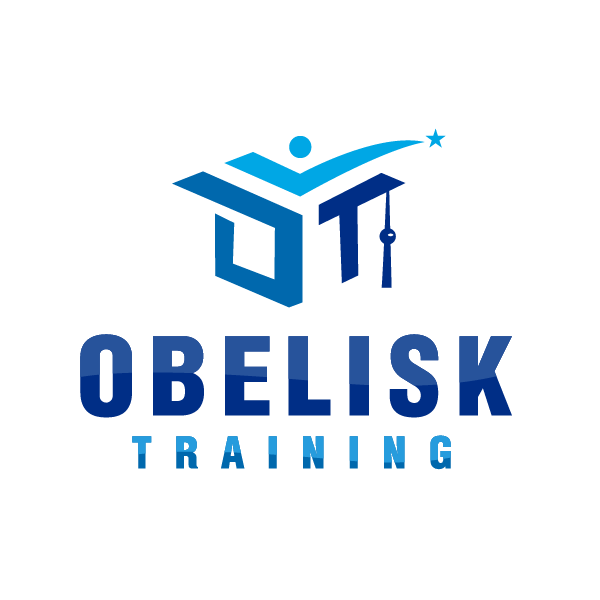
Call Us: +61 452 681 801
Plagiarism Policy
Plagiarism Policy
Obelisk Training is committed to ensuring a great learning experience for its students. It aims to provide a learning environment that fosters the qualities of independent learning and academic integrity.
This policy seeks to encourage ethical conduct and to inform staff and students about the Obelisk Training standards of academic behaviour. Students have a responsibility to maintain the highest standards of academic integrity in their work. Students must not cheat in assessment and must ensure that they do not plagiarise.
What is plagiarism?
Plagiarism is the act of misrepresenting as one's own original work the ideas, interpretations, words or creative works of another. These include published and unpublished documents, designs, music, sounds, images, photographs, computer codes and ideas gained through working in a group. These ideas, interpretations, words or works may be found in print and/or electronic media
Academic integrity
One of the core functions of Obelisk Training is to develop student’s ability to apply critical reasoning to assessment activities through independent thought and to make decisions that reflect the student’s considerations of the task or workplace requirement.
Obelisk Training acknowledges that to develop this ability, the student will study the work of others via issued textbooks, learning material or through their own research. However, it is important that students in their learning acknowledge, through appropriate referencing, earlier work from which they have drawn information.
Referencing
Referencing demonstrates that the student has read the issued material or has undertaken their own research in other sources. Failure to reference appropriately is considered unethical academic behaviour and will result in a student’s work not being accepted.
Students should understand that assignment and project work submitted for assessment must consist of original effort. It is insufficient to simply copy work from other sources and submit it, even if those sources are appropriately acknowledged. Work submitted by a student must have an original component.
The following are examples of plagiarism where a student intentionally does not acknowledgement or reference an author or source
- Direct copying of paragraphs, sentences, a single sentence or significant parts of a sentence;
- Direct copying of paragraphs, sentences, a single sentence or significant parts of a sentence with an end reference but without quotation marks around the copied text;
- Copying ideas, concepts, research results, computer codes, statistical tables, designs, images, sounds or text or any combination of these;
- Paraphrasing, summarising or simply rearranging another person's words, ideas, etc., without reference or explanation;
- Offering an idea or interpretation that is not one's own without identifying whose idea or interpretation it is;
- A ‘cut and paste' of statements from multiple sources;
- Presenting as independent, work done in collaboration with others;
- Copying or adapting another student's original work into a submitted assessment item;
- Copying or adapting a student’s own work submitted in a previous essay or assessment;
Alternatively, there will be instances when a student unintentionally fails to cite sources or to do so adequately.
Careless or inadequate referencing or failure to reference will be considered poor practice. Where careless referencing is identified, the student will be required to correct the error and resubmit an assignment.
How to reference
At Obelisk Training, students are to be encouraged to apply the Harvard Referencing System in-text citation. This approach requires three pieces of information about a source within the text of the students work. This information is:
- the name of the author or authors
- the year of publication
- the page number
- Examples
- Citations may be placed at the end of a sentence (before the concluding punctuation) in brackets, e.g.:
- To succeed, the team will rely on both task process and group process (Dwyer, Hopwood 2010, p. 239)
- A reference may be placed in the text to integrate the author’s surname into the sentence, followed by the year of publication and page number, in brackets, e.g.:
- Dwyer and Hopwood (2010, p. 239) identify that to succeed, the team will rely on both task process and group process.
Reference List
At the end of the students work, a List of References must be included. This should include all the books, journal articles and other sources of information you have used to research your assignment. The reference list should be laid out alphabetically and the title of the source should be italicised. Each reference must include:
- the name of the author or authors
- the year of publication
- the title of the publication
- the edition of publication
- the publisher
- place of publication
- Example: Dwyer, J and Hopwood, N, 2010, Management Strategies and Skills, Sydney, McGraw Hill Australia
Common Knowledge
In every field, there is a body of knowledge and material that has become part of the public domain and which can be drawn on without specific acknowledgment. Common knowledge includes facts that are generally known, such as common facts of history, common sense information, accepted folklore and aphorisms that have been adopted as part of common English language.
As examples, it would not be necessary to reference the following:
That John Howard was the Prime Minister of Australia (common fact of history)
That humans need food and water for survival (common sense observation)
That the “Bunyip” is a man-eating Australian animals that live in water-holes, swamps and creeks (accepted folklore)
Cheating
Cheating is defined as “a form of deceit with a view to gaining an advantage for the cheat.” At Obelisk Training, cheating is usually related to taking unauthorised material into assessments. Obelisk Training trainers have a responsibility to explain clearly the expectations related to any assessment, what constitutes cheating, and to promote a climate of honesty in students.
Staff responsibilities
Obelisk Training staff are responsible for:
- Informing all students of expectations related to assessment;
- Informing all students of referencing techniques and providing clear examples of what is acceptable;
- Explaining to students what constitutes plagiarism;
- Setting realistic assessment activities and varying assignments and questions;
- Assisting students to understand and apply correct referencing techniques;
- Setting appropriate conditions for group activities and make clear the distinction between group work and individual work; and
- Cultivating a climate of mutual respect for original work.
Student responsibilities
Students are responsible for:
- Submitting only work that is their own or that properly acknowledges the ideas, interpretations, words or creative works of others;
- Avoiding lending original work to others for any reason;
- Being clear about assessment conditions and seeking clarification if in doubt;
- Being clear about what is appropriate referencing and the consequences of inappropriate referencing;
- Discouraging others from plagiarising by observing the practices above.
Dealing with plagiarism
In the case of suspected plagiarism, the staff member will report the incident to the Chief Executive Officer. The Chief Executive Officer, in consultation with the staff member will determine if the plagiarism has resulted from poor academic practice or was intentional. This preliminary step may involve an informal interview with the student.
The Chief Executive Officer and staff member will:
- consider the extent of the plagiarism (noting that the more extensive the plagiarism, the more likely it was intentional);
- review the course profile and other information provided to students by the Senior Trainer to determine if adequate information had been given;
- identify if the student has been previously warned of plagiarism;
- determine whether the student is new to adult vocational education and training (it would be expected that continuing students would be more likely to understand plagiarism and its consequences);
If the above factors have been considered and it has been determined that the plagiarism has arisen from poor academic practice, the student is to be requested to revise the work and resubmit it for the assessment.
If, after consideration of the above factors it is determined that the plagiarism was intentional, the student’s work is not to be accepted and the student is to be issued with an alternative assessment assignment to complete. The student is to be given a formal warning (in writing) by the Chief Executive Officer explaining the seriousness of the incident and the consequences if the student is found to plagiarise again.
Students who commit plagiarism after being formally warned are to be withdrawn from the programme they are enrolled and issued with a refund of their tuition fees less all expenses incurred by Obelisk Training up to the point of their withdrawal.

RTO Code: 46135
526/368 Sussex St, Sydney NSW 2000
WhatsApp/Call: +61 452 681 801
Student Support Contact: 08 9589 9504
WhatsApp/Call: +61 452 681 801
Student Support Contact: 08 9589 9504
Email: student.support@obelisktraining.edu.au
Obelisk Training acknowledges and pays respect to the Traditional Owners of Country throughout Australia. We acknowledge their continuing care for and connection to land, sea and community. We pay our respects to them and to Elder’s past, present and emerging.
We hope that our focus on creating opportunity for the community and the preservation of Australia’s culture, the oldest surviving culture in the world, leads to a brighter future for us all.
Always was. Always will be Aboriginal land.
Intensive, Weekend Training!
Looking for next cohort?
Express your interest and we will reach out when the schedule for next session is ready!
ICTPRG302- Apply Introductory Programming Techniques
For job seekers, up-skilling, students, and professionals.
BSBSS00093 Cyber Security Threat Assessment and Risk Management Skill Set
For cyber security entry level job seekers, professionals, and students.
